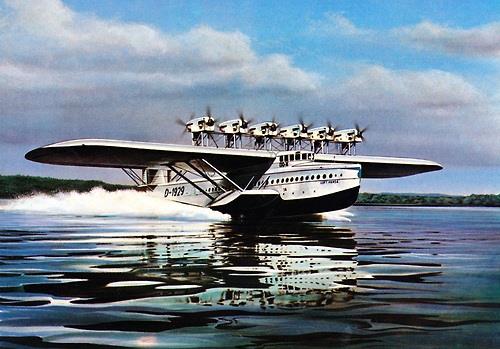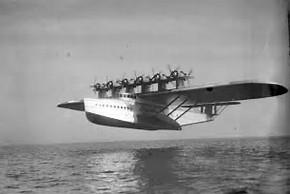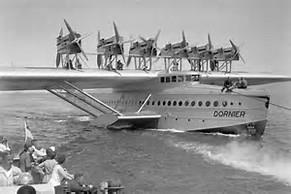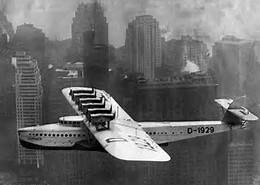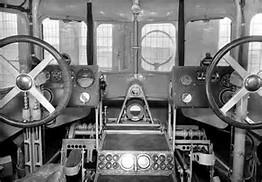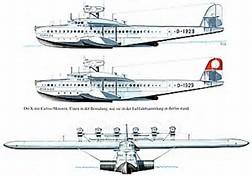A free template by Lucknowwebs.com for WYSIWYG WebBuilder 8
Powered by Sispro1-S
Nigel G Wilcox
Paragon Of Space Publication
© Copyright Reserved - United Kingdom
Ideal Screen Composition 1024 x 768
SITEMAP
SCIENCE RESEARCH
ABOUT
Desk
Supersonic
Stealth
MAIN INDEX
Sea-Air Planes
Dornier DO X
The Dornier Do X was the largest, heaviest, and most powerful flying boat in the world when it was produced by the Dornier company of Germany in 1929. First conceived by Dr. Claude Dornier in 1924, planning started in late 1925 and after over 240,000 work-hours it was completed in June 1929.
Maximum speed: 211 km/h (131.11 mph) Maiden flight: 12 Jul 1929 Length: 131.40 ft Wingspan: 157.41 ft Manufacturer: Dornier Flugzeugwerke Type: Flying boat
General characteristics
Crew: 10-14
Capacity: 66-100 passengers
Length: 40 m (131 ft 4 in)
Wingspan: 48 m (157 ft 5 in)
Height: 10.25 m (33 ft 7 in)
Wing area: 450 m2 (4,844 ft2)
Empty weight: 28,250 kg (62,280 lb)
Max. takeoff weight: 56,000 kg (123,460 lb)
Powerplant: 12 × Curtiss Conqueror water-cooled V12, 455 kW (610 hp) each
Performance
Maximum speed: 211 km/h (131 mph)
Cruise speed: 175 km/h (109 mph)
Range: 1,700 km (1,056 mi)
Service ceiling: 3200 m (10,498 ft)
Wing loading: 94 kg/m2 (19.3 lb/sq ft) (at 46 tons weight)
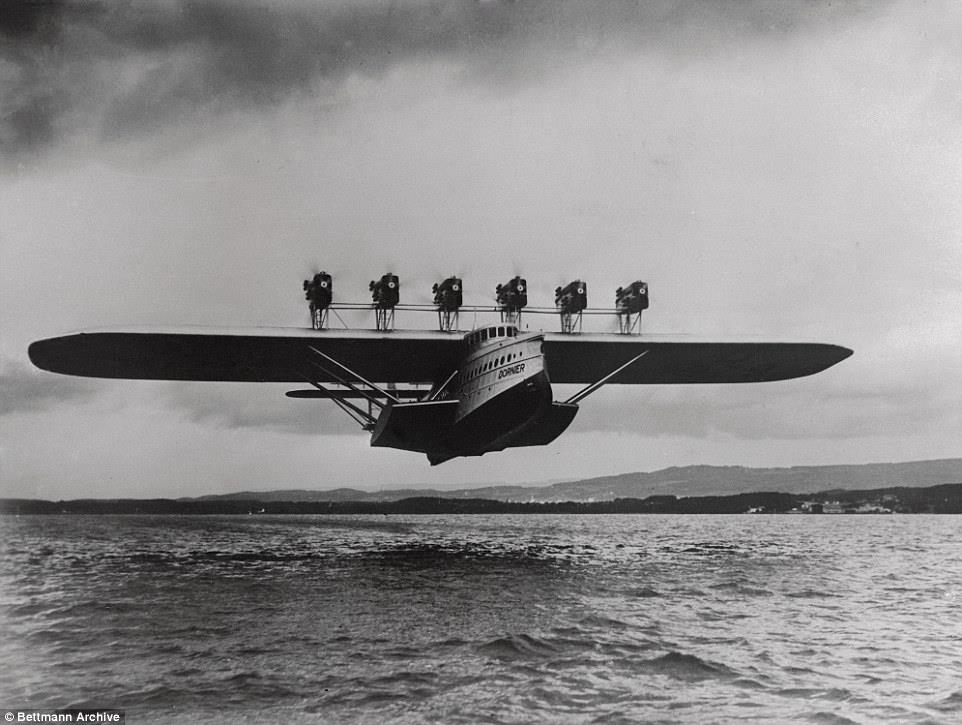
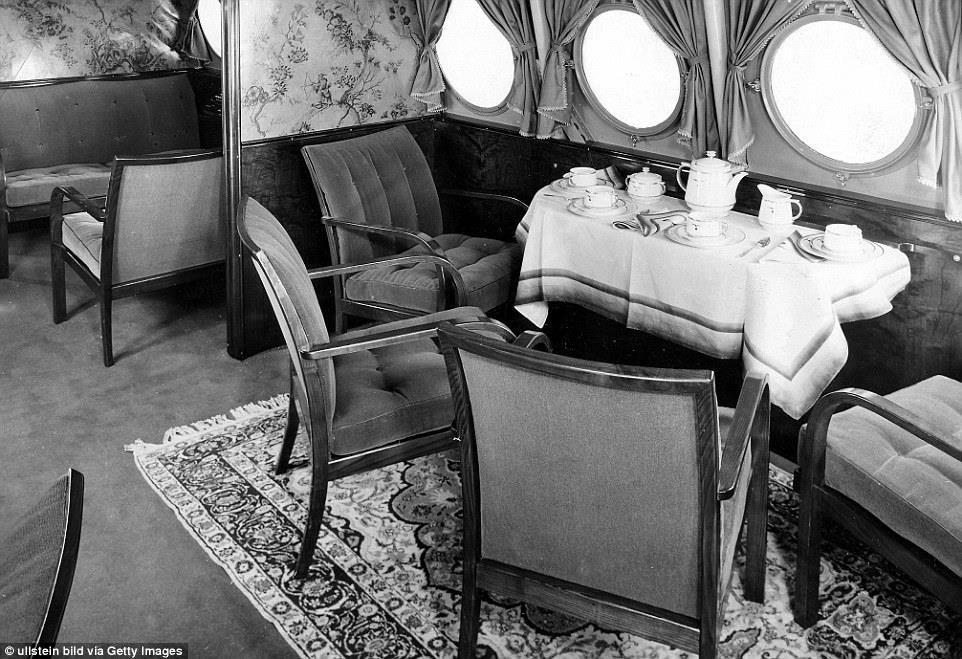
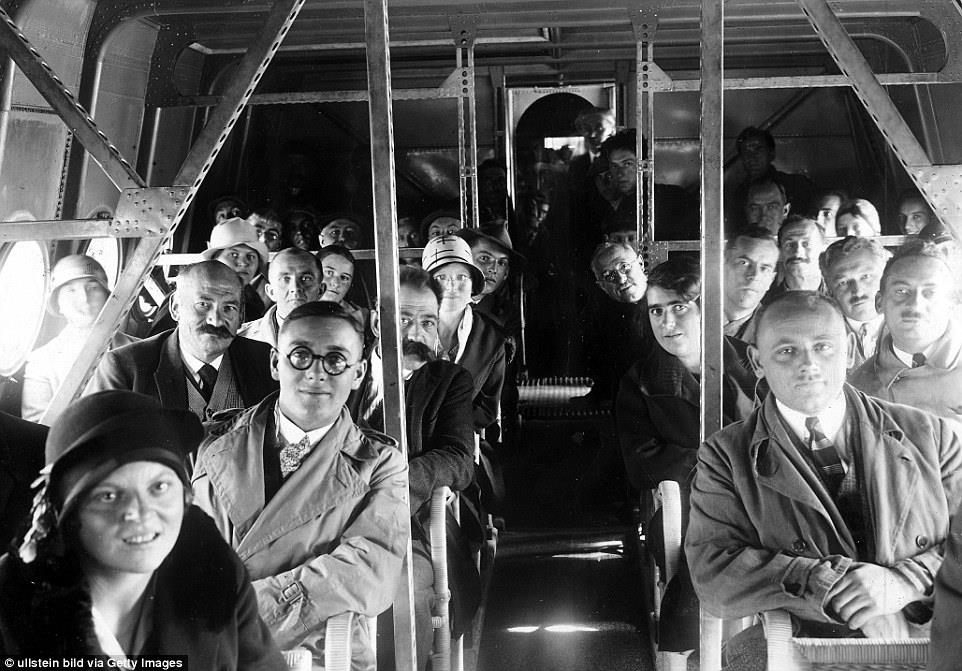

The Dornier Do X was the largest, heaviest and most powerful flying boat in the world when it was produced by the Dornier company in 1929. The aircraft was conceived by Dr. Claudius Dornier and took seven years to design and another two years to build. In the design process, a one-to-one wooden mock-up, the first in aviation history, was built. This is the Gmax Dornier DO-X base package. Includes 2D panel, 3D panel, sounds and polished aluminium textures (without paint scheme). Inspired in the real aircraft. By Project Eolo - Aeolus Project and Adapted for FSX by Eric Buchmann.
Accommodations aboard the Do-X were spacious and luxurious, with a dining salon, smoking lounge, wet bar and comfortable seating for 70 to 100 passengers.
The Do-X made its first test flight on July 12, 1929. A few months later, it carried a world-record 169 passengers on a 40-minute flight. Passengers were asked to move from one side of the cabin to the other to help the captain bank into turns.
In 1930, the Do-X took off on an international publicity tour, hopping through Europe, down the west coast of Africa, across the Atlantic to Brazil and up to New York before returning to Berlin.
The tour was intended to stoke interest in the Do-X for civilian air travel, but apart from two additional models built for the Italian state airline SANA, the leviathan of the sky failed to take off commercially.
On 29th November, the aircraft was damaged by a fire that broke out on board. The journey had to be interrupted in Lisbon for six weeks, whilst the necessary repairs were carried out.
The Do X then continued its journey along the western coast of Africa to Cape Verde, with several other accidents and delays. It crossed the Atlantic Ocean and landed in Rio de Janeiro, Brazil, on 20th June, 1931. The flight continued along the Atlantic coast of South America, with numerous stops in various towns; then across the Caribbean to the USA, finally reaching New York on 27th August, 1931. The journey took almost nine months!
The return to Germany was again delayed by necessary repairs. The Do X departed from New York on 21st May, 1932, flying via Newfoundland and the Azores, and arriving to Berlin on 24th May, 1932.
The Do X subsequently flew in Europe, but its last flight occurred in September 1933. The other two produced examples were used by the Italian Air Force.

Role: Long-range airliner, flying boat
Manufacturer: Dornier
Designer: Dr. Claude Dornier
First flight: 12 July 1929[1]
Primary user: Regia Aeronautica
Number built: 3
S'sonic
Stealth
Menu
Space
Transport
Menu
Topic
Menu
Study
Menu



